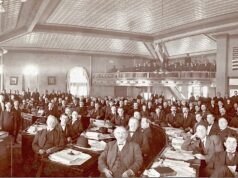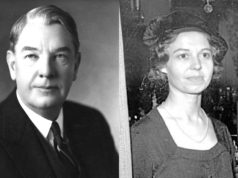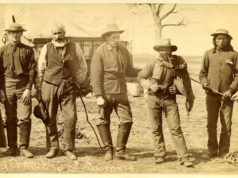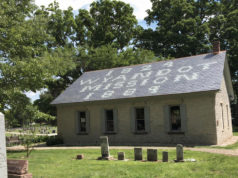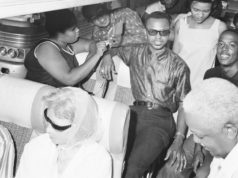
Long before it became a state, Oklahoma became a battleground where some of the earliest steps toward Black civil rights took shape and tribal nations’ already tenuous relationship with the federal government further strained amid gun smoke and cannon fire.
Today, July 17, marks the 161st anniversary of the Battle of Honey Springs, a significant clash in Oklahoma and Civil War history not just because of its outcome, but because of the soldiers who fought there.
The largest of more than 100 engagements in Indian Territory, the Battle of Honey Springs was also among the most diverse, with approximately 80 percent of troops representing six tribal nations. Furthermore, it became a proving ground for the First Kansas Colored Infantry Regiment, the initial African American unit to fight for the United States in combat. Called the “Gettysburg of the Trans-Mississippi West,” the Union victory at Honey Springs secured control of the territory for the remainder of the war.
The outbreak of the Civil War in the spring of 1861 presented a dilemma for the Five Tribes — the relocated Cherokee, Choctaw, Chickasaw, Muscogee (Creek) and Seminole nations. Many among the Five Tribes distrusted the federal government given their forced expulsion to Indian Territory just three decades earlier, and remaining native slaveholders within some of the tribes sought to protect the institution of slavery. However, some desired to maintain treaties signed with the federal government amidst concerns that President Abraham Lincoln’s administration sought to open western lands to settlement.
Ultimately, geography also helped inform their decisions, as the Five Tribes maintained socioeconomic ties with neighboring southern states such as Texas and Arkansas. While the reasons the Five Tribes chose to ally with the Confederacy are nuanced and complex, they ultimately did so in the fall of 1861. There were individual tribal members who rejected the Confederate cause and supported the Union, notably native refugees who fled north to Kansas to form the Indian Home Guard.
‘A struggle for their own freedom’
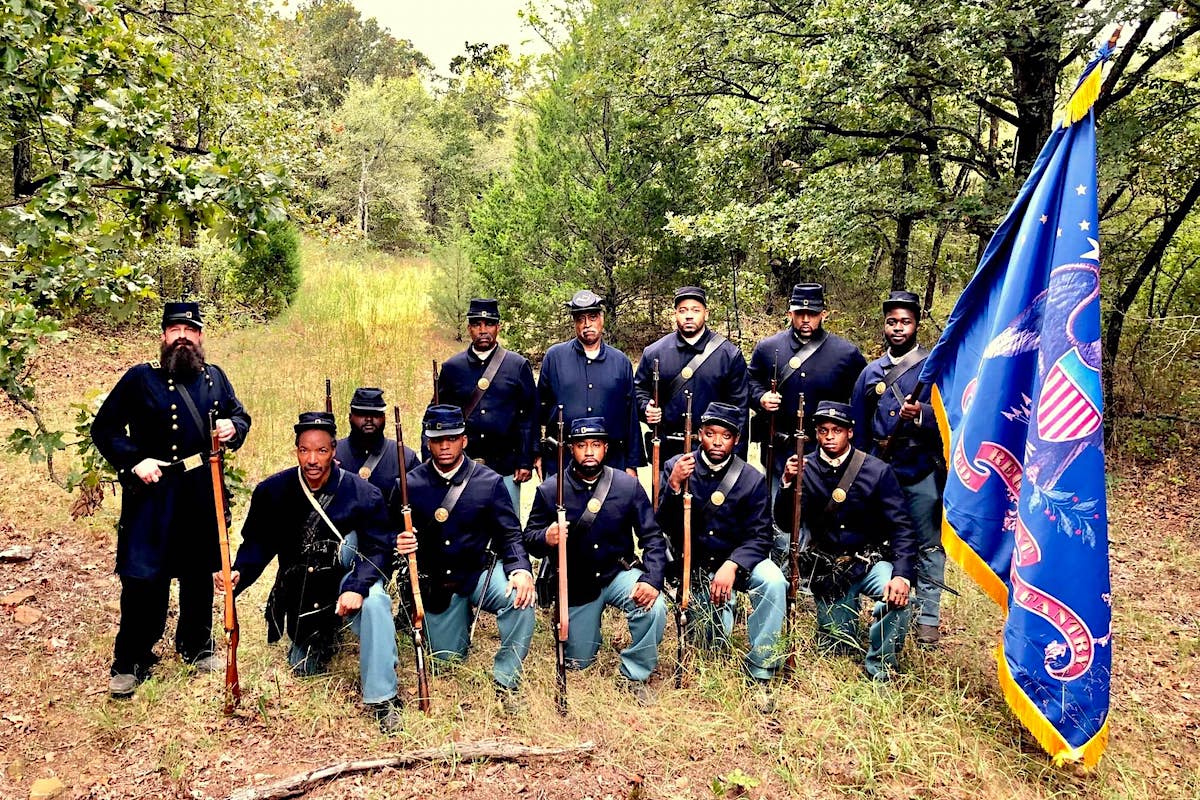
Despite Lincoln’s hesitancy to use Black soldiers in combat, U.S. Sen. James Henry Lane of Kansas recruited a militia of formerly enslaved people to fight for the Union in August 1862. They won their first battle at Island Mound, Missouri, on Oct. 29. Black soldiers could officially enlist in the Union Army after Lincoln issued the Emancipation Proclamation on Jan. 1, 1863.
The Kansas militia unit became designated as the First Kansas Colored Infantry Regiment under the command of Col. James Monroe Williams. Williams characterized what was at stake for Black soldiers under his command.
“This will be no mere struggle for conquest, but a struggle for their own freedom, a determined and, as I believe, irresistible struggle for the disenthralment of a people who have long suffered oppression and wrong at the hands of our enemies,” he said.
The Union had been all but banished from Indian Territory early in the war. Its forces managed to recapture Fort Gibson in the spring of 1863, but their hold was tenuous and dependent upon adequate supplies. In late June, the First Kansas, along with three regiments of the Indian Home Guard, were assigned to protect 200 wagons bound for Fort Gibson from Fort Scott, Kansas. On July 1 and July 2, they defeated an opposing Confederate force commanded by Col. Stand Watie at Cabin Creek near present-day Vinita.
This engagement, later known as the First Battle of Cabin Creek, was the first time Indigenous, Black and white troops fought alongside each other. The supply train successfully made it to Fort Gibson.
Having caught wind of Confederate Brig. Gen. Douglas Cooper‘s plan to link up with reinforcements from Fort Smith, Arkansas, and attack Fort Gibson, Union Maj. Gen. James Blunt took the initiative. He marched against Cooper’s forces with 600 men and two 12-pound howitzers, from Fort Scott to Fort Gibson. His men arrived July 11, making the 120-mile journey in three days.
‘They will not give quarter’
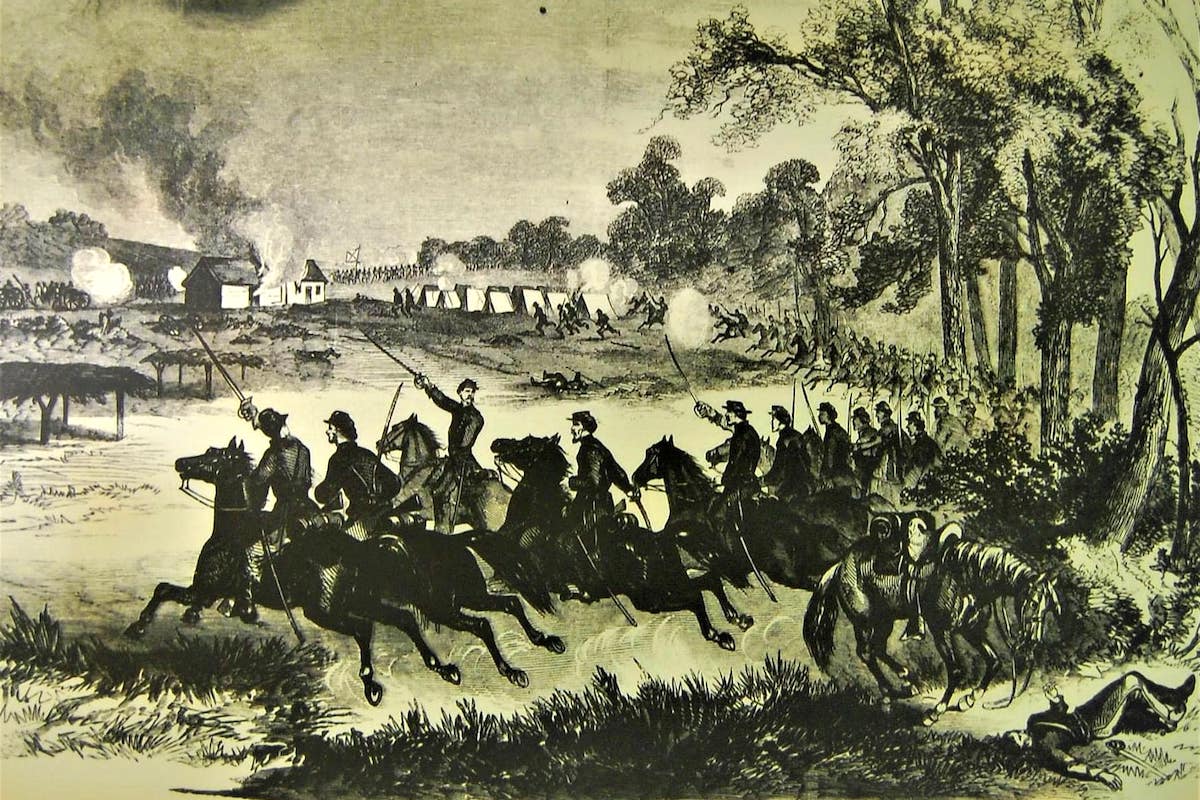
Honey Springs was a Confederate supply depot near Elk Creek, southwest of Fort Gibson. There, Cooper’s force of approximately 6,000 men waited for reinforcements while Blunt ferried his 3,000 troops, artillery and horses across the Arkansas River on July 16.
The Union force marched all night toward Honey Springs. A brief skirmish between opposing cavalry units broke out at Chimney Mountain, pushing the Confederates back toward Honey Springs. Early in the morning of July 17, Blunt stopped his soldiers one-half mile from Elk Creek to give them time to rest.
“I made use of the time by climbing on the roof of a farmhouse,” Col. Thomas Moonlight recalled. “With the aid of a spyglass, I discovered the Rebel line of battle. I also discovered from my elevated position that the enemy could not discover our advancing columns until within 100 yards.”
Learn more
Owned and operated by the Oklahoma Historical Society, Honey Springs Battlefield is open for visitation 9:30 a.m. to 4:30 p.m. Tuesday through Saturday.
Cooper stationed his troops — including Cherokee, Muscogee, Choctaw and Chickasaw regiments — and dismounted Texas cavalry in the brush on both sides of the creek. The Confederate line stretched for one-and-one-half miles, outnumbering Union soldiers by approximately two to one.
The stakes were high for both armies. Williams warned the soldiers of the First Kansas of their fate if they were captured.
“You know it is a common report that the Confederate troops and their officers boast that they will not give quarter to colored troops and their officers,” Williams said. “Show the enemy this day that you are not asking for quarter, and that you know how and are eager to fight for your freedom.”
Confederate Col. Chilly McIntosh of the Second Creek Mounted Volunteers described the stakes to his fighters.
“Man must die sometime, and since he must die, he can find no nobler death than that which overtakes him while fighting for his home, his fires and his country,” he said.
The Union had a firepower advantage of 12 artillery pieces to Cooper’s four, compensating for their deficit in soldiers. Blunt advanced his infantry about mid-morning to draw fire from the Confederate artillery. He began firing his artillery once the Confederates revealed their position. Soon enough, both armies were wholly engaged. Blunt ordered the First Kansas to fix bayonets and capture one of the Confederate guns. The fighting raged for two hours without much to show for either side.
A mistaken advance from the Union’s Second Indian Home Guard Regiment ultimately became the Union’s benefit. With rifle and cannon smoke filling the air, they advanced too far between the First Kansas and the Confederate line. When they fell back to safer ground, the 29th Texas Regiment assumed the entire Union force was retreating. Thinking they had the advantage, the 29th Texas joined soldiers from the 20th Texas Regiment by advancing into withering fire from Union forces.
The fusillade of fire was too strong, forcing Confederate forces to retreat toward Elk Creek. Fighting at the lone toll bridge over Elk Creek was brutal, with hand-to-hand combat and bayonets supplanting musket fire. Col. Stephen Wattles of the First Indian Home Guard noted the advance of his regiment against an enemy “desperately contesting every foot of ground.” Confederate forces managed to stave off the Union advancement long enough to get their remaining artillery across the bridge.
Blunt was determined to give chase, and the fighting resumed south of Elk Creek. Cooper prioritized the protection of Confederate supplies near Honey Springs — nearly two miles away — but he ultimately settled on evacuating some provisions in wagons and torching what remained. Union soldiers got to the burning supply cache in time to salvage some food. They were in no condition to give chase to the retreating Confederates, however.
The battle resulted in a decisive win for the Union. Blunt’s army lost 17 men, and 60 were wounded. Cooper lost 150 men, and 400 were injured.
The legacy of Honey Springs
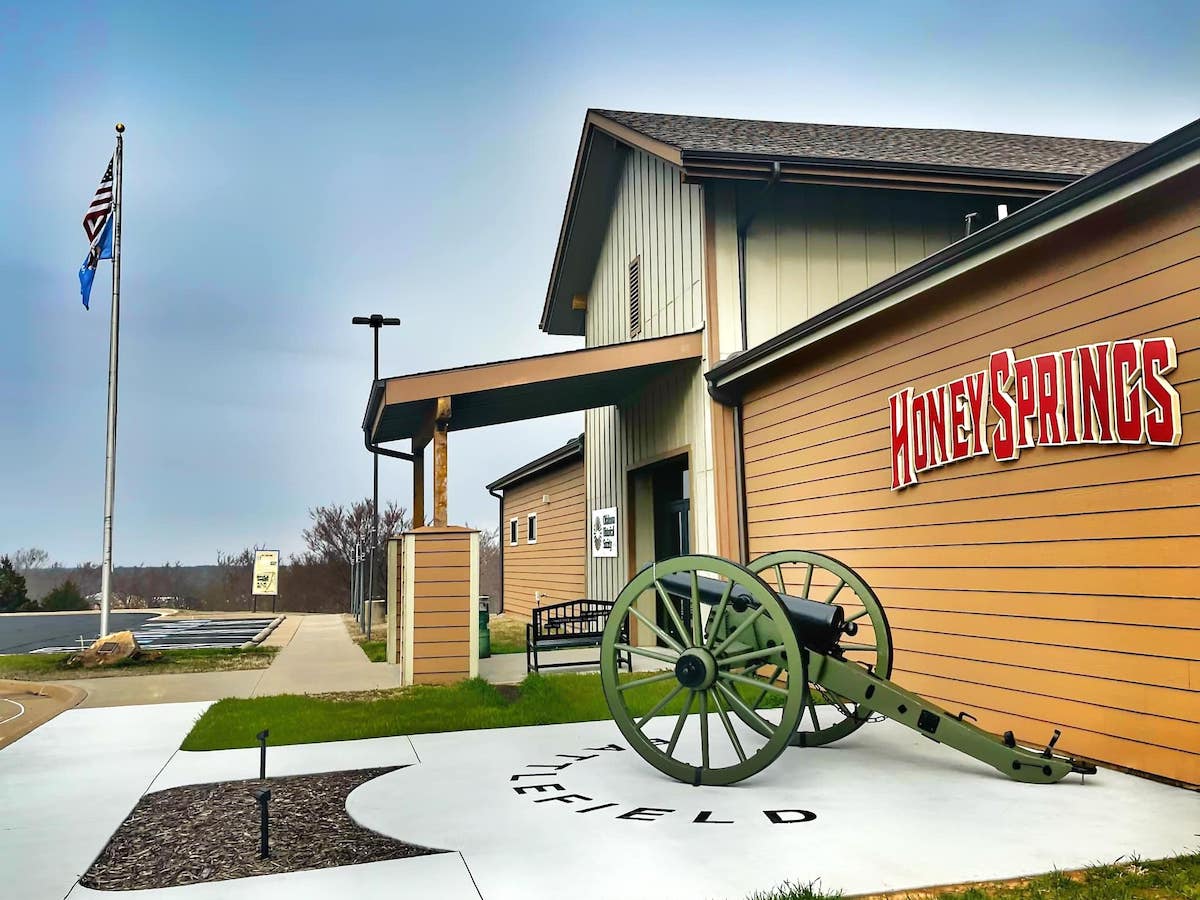
The characterization of the Civil War as a conflict of “brother against brother” was epitomized by the Battle of Honey Springs, where tribal citizens faced off against kinsmen they had known their entire lives. Hispanic soldiers fought in the battle, too, along with their Texas brethren.
Perhaps no unit had more to gain or to lose than the soldiers of the First Kansas. While they had seen combat before, no opposing force had compared to the enemy they faced at Honey Springs, and their performance undermined criticism from those opposed to allowing African Americans into the U.S. military.
Blunt, the Union general, commented on the First Kansas soldiers after the battle.
“They fought like veterans and preserved their line unbroken throughout the engagement,” he said. “Their coolness and bravery I have never seen surpassed (…).”
After the Battle of Honey Springs, Union troops found 500 pairs of shackles at a Confederate supply depot intended to take captured Black soldiers back to slavery.









